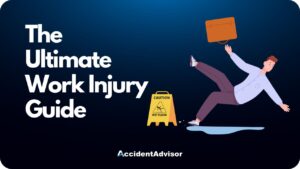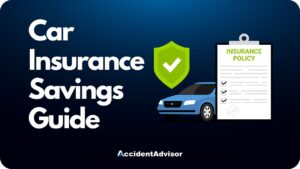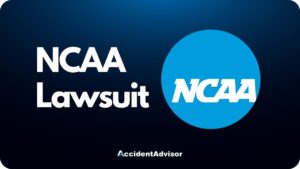Establishing fault in a car accident when changing lanes is not always straight-forward. Fault is determined after considering the road conditions, evidence, and testimonies available. However, in the view of the law, the fault in a car accident when changing lanes almost always rests with the driver who was changing lanes, called the “merging driver.”
This is because the merging driver has the responsibility to check their destination to make sure it’s clear while the drivers in the destination lane have the right of way to continue driving in a straight line. We will discuss when the driver in the destination lane could possibly be at fault for the accident and how this might affect your settlement. However, since the fault is usually self-evident in an accident involving changing lanes, we also review the steps you can take to file for compensation if you are involved in one.
Table of Contents
- How Common are Car Accidents When Changing Lanes?
- Is the Changing Lanes Always at Fault?
- What is an Improper or Unsafe Lane Change?
- How Do You Determine Fault in a Car Accident When Changing Lanes?
- Common Car Accidents that Involve Changing Lanes
- If You Change Lanes and Get Rear-Ended, Whose Fault is it?
- If There’s a Lane Change Collision, Who’s at Fault?
- Is it Illegal to Change Lanes in an Intersection?
- Common Injuries for Car Accidents When Changing Lanes
- How to Prevent Car Accidents When Changing Lanes?
- How to File a Claim for Accidents Involving Lane Changes?
- Conclusion
How Common are Car Accidents When Changing Lanes?
Lane change accidents or “merging collisions” account for around 4-10% of all vehicular accidents depending on the year, according to the National Traffic Safety Administration (NHTSA). This means that if 35,766 crashes occur, as they did in 2020, merging collisions account for anywhere from 1,430 to 3,576 crashes every year.
This makes merging collisions common in the United States, which is why the law surrounding fault for such accidents is so strict. Thankfully, this type of accident is one of the least severe in terms of injuries due to the angles and speeds of the cars. Instead of the full-force impact of a T-bone or rear-end crash, a lane change accident usually results in a side swipe.
Therefore, merging collisions are less fatal than other types of accidents. According to another NHTSA report, lane change collisions only caused 0.5% of traffic-related fatalities for the year, despite accounting for at least 4% of the accidents.
Is the Changing Lanes Always at Fault?
The fault in a car accident when changing lanes almost always falls on the merging driver. It’s their responsibility to make sure their destination is free of other drivers before switching lanes. However, they may not be solely at fault for the accident if the other driver is discovered to be negligent in their basic safety responsibilities.
If the driver in the receiving lane was driving impaired due to intoxication or drug use, or driving distracted due to texting or talking, they may share the fault in the accident. Additionally, the driver in the receiving lane may be driving aggressively, refusing to let the merging driver through on purpose, which could also cause them to share the fault.
What is an Improper or Unsafe Lane Change?
An unsafe lane change is almost always defined by the behavior of the merging driver as they change lanes, whether they fail to signal or aren’t driving properly for the road conditions. One of the most common traffic tickets is a citation for failing to properly merge, which can lead to an accident with another vehicle or even a pedestrian.
- Failing to gauge the space of the destination lane is a common cause of an unsafe lane change. If the drivers in the receiving lane fail to react fast enough, you may collide with them due to misjudging their speed.
- Changing lanes without checking your blind spots can also result in an accident since cars in the merging lane are often difficult to see in mirrors.
- Failing to signal is a major infraction that can lead to a lane change accident since the drivers in the receiving lane wouldn’t be able to react to your movement. This also applies to failing to signal for long enough before merging.
- Driving aggressively and trying to cut off cars in the receiving lane is another common cause of accidents.
- Failing to drive safely in the driving conditions on the road at that time can lead to accidents, such as driving too fast on a wet road or forgetting to turn headlights on when driving at night.
- Driving distracted or impaired is a common cause of any traffic accident, including merging collisions.
- Neglecting to yield the right of way either to cars or pedestrians can lead to a lane change accident where people in the destination lane have no way of predicting your movements.
How Do You Determine Fault in a Car Accident When Changing Lanes?
Fault in a car accident when changing lanes is determined first by the police report. This is why calling 911 is important to insurance claims. The adjuster will take into account the officer’s observations of the scene as well as the testimonies of any witnesses.
Physical evidence is another factor in determining fault, including the location of the damage. This can provide clues to who was at fault by suggesting where the cars were, relative to each other, at the time of the accident. Damage location could even indicate their speeds.
Since the at-fault driver will rarely claim responsibility, insurers and judges rely on objective observers and physical evidence to assign fault.
Common Car Accidents that Involve Changing Lanes
Lane change accidents vary by location, which can affect not only their severity but also the determination of fault. For example, merging onto a highway can cause a lane change accident if the merging driver doesn’t merge at a high enough speed. By contrast, since they have to merge onto the highway from that lane, aggressive driving by the driver in the destination lane could cause them to share the fault since the driver switching lanes has fewer options than on a city street.
Exit ramps are also common sites of lane change accidents since drivers often feel compelled to get in certain lanes in a hurry, such as to get to their correct exit or to switch payment lanes at a toll station.
If You Change Lanes and Get Rear-Ended, Whose Fault is it?

While fault in rear-end accidents normally falls on the driver who crashed into the other vehicle, the merging driver is still likely at fault in a lane change accident involving a rear-end collision. This is because of who has control over the situation. The driver in the destination lane is driving in a straight line, presumably within the rules of the road. The merging driver has the responsibility to check the lane, signal properly, and merge effectively.
As always, driving under the influence of drugs or alcohol or driving distracted could cause a driver to be at fault for an accident. This is true even in a rear-end collision that would not normally be their fault.
If There’s a Lane Change Collision, Who’s at Fault?
In a lane change collision, the merging driver is usually at fault since the safe transition between lanes is their responsibility. However, the other driver could share in the fault if they were driving impaired, distracted, or aggressively.
For example, aggressively speeding up as the other driver tries to merge from the front or slowing down as they merge from the back could cause the accident despite the merging driver’s precautions. This behavior, if confirmed, could cause the driver in the destination lane to share in the fault for the accident. This is another reason why witness testimonies can be significant in lane change accident cases.
Is it Illegal to Change Lanes in an Intersection?
Most states prohibit changing lanes in intersections by law, though not all do. They do this to keep intersections clearer and prevent confusing lane changes around lights and turn lanes. But some states such as California, New York, New Jersey, and Texas allow drivers to legally merge at intersections, according to their individual DMV sites.
However, even in states where this is the case, the law clarifies that a lane change is only legal when done safely. Police officers can still cite a lane change as illegal if it results in an accident, even in states where the lane change itself was not technically prohibited.
Common Injuries for Car Accidents When Changing Lanes
Car accidents when changing lanes are not as fatal as other types of accidents, but they can easily cause bodily harm and even fatalities. The most common injury for this accident type is a concussion due to the angle of impact of the cars. This can lead to whiplash, a latent neck injury that often causes chronic pain.
Other common injuries include fractures and lacerations, spinal cord injuries due to contortion, and internal injuries such as bleeding or organ damage. Finally, mental damage can be just as damaging and costly as physical damage, so PTSD and depression should be taken into account when calculating damage.
How to Prevent Car Accidents When Changing Lanes?
Car accidents when changing lanes are more preventable by the merging driver than the driver in the destination lane. The best ways to prevent these accidents involve awareness and preparation, including using a turn signal for an adequate amount of time, checking mirrors, checking blind spots, and maintaining a safe speed.
However, drivers in the destination lane can prevent these accidents as well by being mindful of when other drivers need to merge, especially around exits, and never driving aggressively. As always, refraining from driving under the influence or driving distracted is another way to prevent any accident, including merging collisions.
How to File a Claim for Accidents Involving Lane Changes?
To file an insurance claim for an accident involving a lane change, your insurer will need to be notified of the accident as soon as possible. From there, the evidence will be reviewed, including the police report, witness accounts, and physical evidence. To help your case, gather this evidence yourself at the scene, including the other drivers’ information and photos of the damage.
From there, the adjuster may make an offer or ask you questions. Remember that the insurer is not your ally. You should only speak to them when you have to and never accept their first offer. Remember that if the insurance claim is insufficient to cover your damages, both mental and physical, a car accident lawyer can help you file a personal injury lawsuit against the other driver.
Conclusion
Car accidents are common when changing lanes, though they can often be prevented by being mindful of your surroundings and respecting other drivers. When merging collisions occur, the merging driver is usually at fault, though the behavior of each driver can affect the outcome. Speak with an experienced car accident attorney to learn how you can make your case for compensation after being in a merging collision.

Rocky Horton
Author
Rocky Horton is a health and safety expert from Chapel Hill, NC. He is the founder of AccidentAdvisor and has been featured in Forbes, Bloomberg, and other publications. Learn more.













